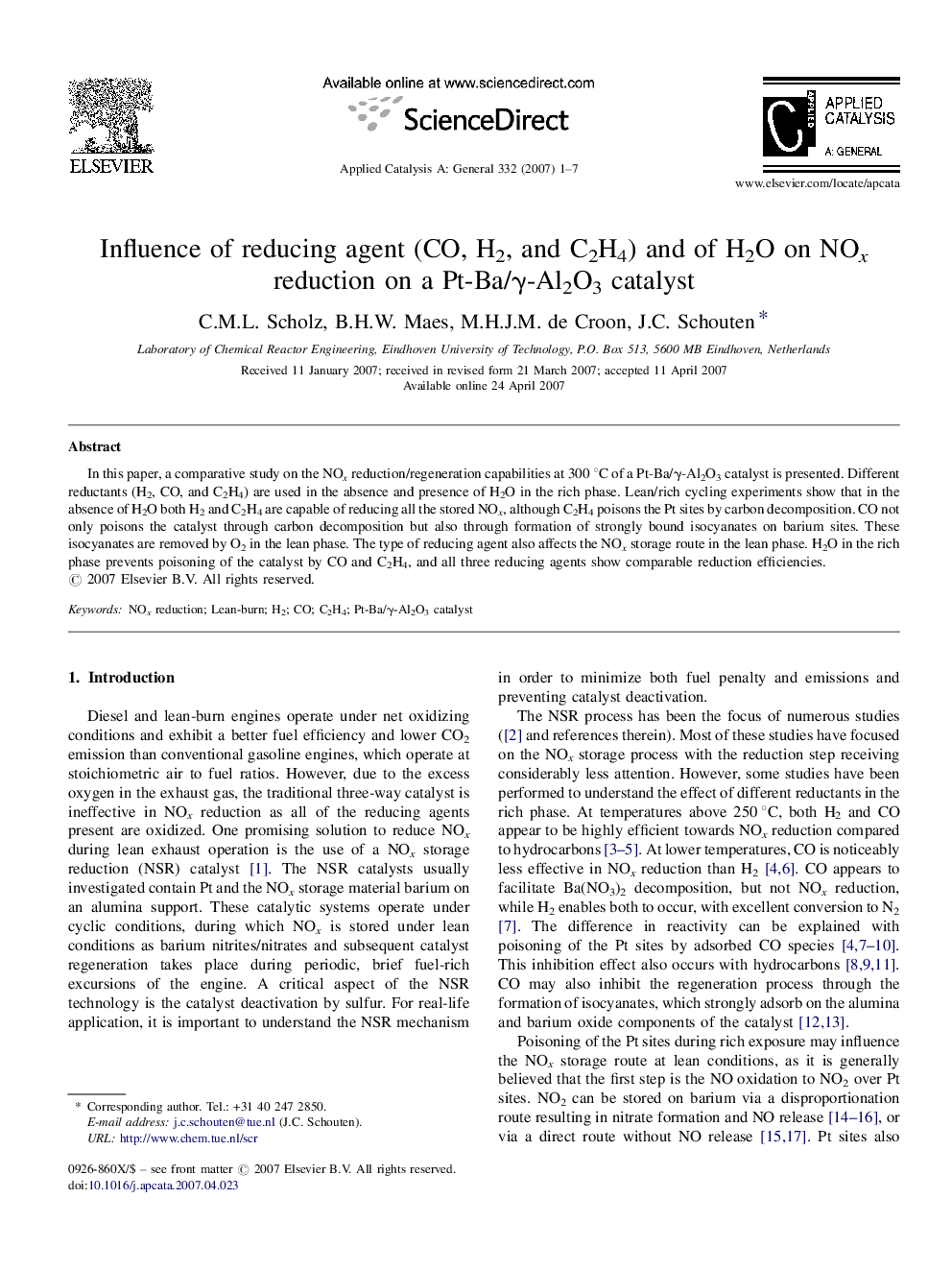| کد مقاله | کد نشریه | سال انتشار | مقاله انگلیسی | نسخه تمام متن |
|---|---|---|---|---|
| 43418 | 45969 | 2007 | 7 صفحه PDF | دانلود رایگان |

In this paper, a comparative study on the NOx reduction/regeneration capabilities at 300 °C of a Pt-Ba/γ-Al2O3 catalyst is presented. Different reductants (H2, CO, and C2H4) are used in the absence and presence of H2O in the rich phase. Lean/rich cycling experiments show that in the absence of H2O both H2 and C2H4 are capable of reducing all the stored NOx, although C2H4 poisons the Pt sites by carbon decomposition. CO not only poisons the catalyst through carbon decomposition but also through formation of strongly bound isocyanates on barium sites. These isocyanates are removed by O2 in the lean phase. The type of reducing agent also affects the NOx storage route in the lean phase. H2O in the rich phase prevents poisoning of the catalyst by CO and C2H4, and all three reducing agents show comparable reduction efficiencies.
NOx reduction/regeneration of Pt-Ba/γ-Al2O3 catalyst is studied, using H2, CO, and C2H4 as reductant in the absence and presence of H2O in the rich phase. Without H2O, H2 and C2H4 are capable of reducing all stored NOx. Pt sites are poisoned by C2H4 and CO through carbon decomposition, and, for CO, also through formation of isocyanates. H2O in the rich phase prevents poisoning, and all three reductants show comparable efficiencies. Figure optionsDownload as PowerPoint slide
Journal: Applied Catalysis A: General - Volume 332, Issue 1, 1 November 2007, Pages 1–7